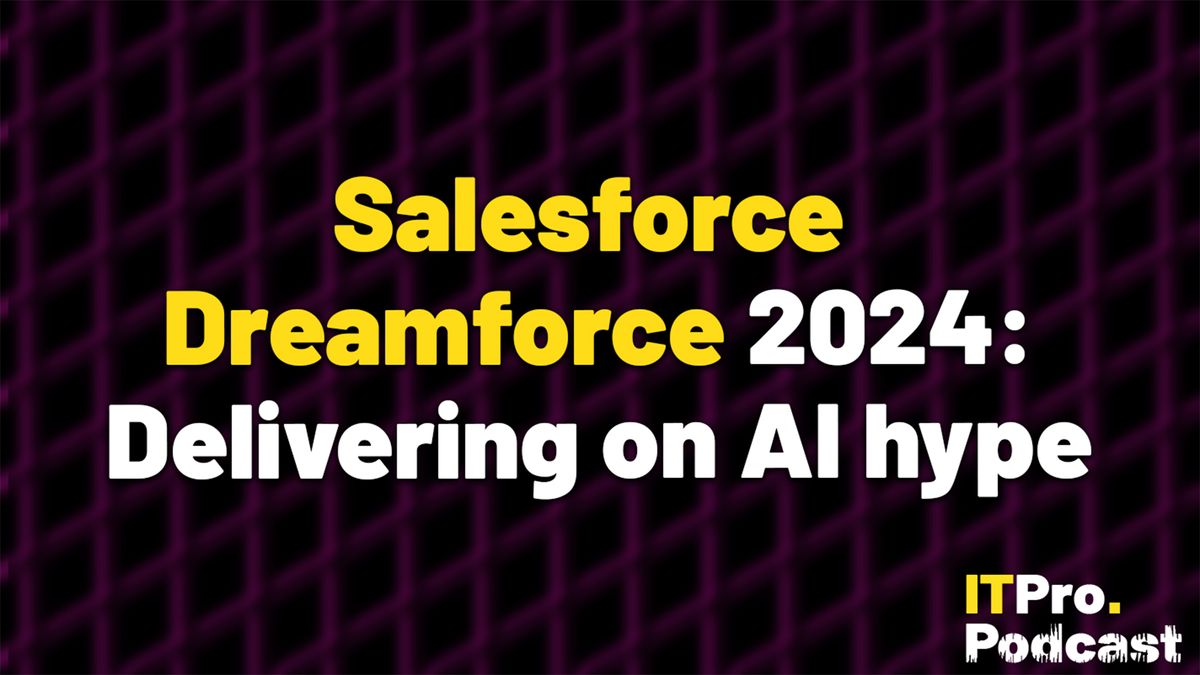Salesforce Dreamforce 2024: Delivering on AI hype

When it comes to the companies leading the way in AI development, Salesforce might not be the first name that springs to mind. The veteran CRM provider launched its flagship ‘Einstein’ AI in 2016, which relied on traditional machine learning methods to improve customer experience, but hasn’t sought to go head-to-head with major AI developers.
With several years of generative AI hype at its back, the company is trying to carve a out a place for itself as the purveyor of trusted AI tools that live up to the hype – put simply, automated software that helps us work less, and reap more rewards.
How has the company sold this vision so far at its annual conference, Dreamforce 2024? And is it likely to succeed given the vicious competition in the space?
In this episode, Jane and Rory speak to Ross Kelly, ITPro’s news and analysis editor, live from Dreamforce in San Francisco.
Highlights
“So Agentforce has been in the works for a while, they’ve been running pilot schemes with customers already for a good few months now, I think the best part of six months. So I think that’s allowed Salesforce to actually provide tangible evidence of how impactful this is, which is good as customers aren’t just being told ‘This is going to be great, buy it’.”
“They’ve put a lot – a lot – of work in and invested a lot within Salesforce Data Cloud. They’ve invested a lot in their Einstein trust layer to essentially calm those fears around data privacy, data protection, data leakage, and model-related issues such as hallucinations, a big push in that over the last year and this seems like the culmination of it.”
“Copilot, and other AI tools of this ilk, sit adjacent to the human worker within the organization. Salesforce contends that these are outdated and inefficient, essentially, and their perspective agents are the next evolutionary step. They’re far more intuitive, they’re autonomous for a start, so it’s kind of almost a plug-and-play approach here and you’re drawing or retrieving data on demand from within your own internal data lakes.”
Subscribe
Source link







